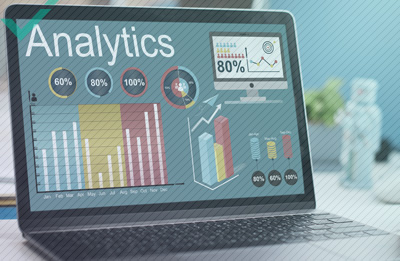Digital marketing is one of the most important parts of your e-commerce strategy. Establishing, understanding, and maintaining a web presence is critical to increasing traffic and boosting conversions. Furthermore, online marketing channels allow you to create stronger, longer-term relationships with customers you already have. The strategy behind digital campaigns is based on multiple technologies and overall market knowledge. An integral part of this process is using analytics tools to see where your traffic is coming from, which channels and campaigns are working best, and which ones are falling flat. In turn, this allows small and mid-sized businesses to use money more efficiently. In today’s mature online marketing space, there are both established technologies and constantly evolving ones that help business owners understand their digital marketing campaigns, in order to craft better strategies and produce more profitable content. Broadly, this field is known as “analytics.” Within that, however, there are several different facets of the discipline.
WHAT ARE ANALYTICS?
Analytics is a broad field. It encompasses mathematics, statistics, predictive modelling, and machine-learning to find meaningful patterns in data. When it comes to e-commerce, this term also refers to the tools of the trade used to gauge the effectiveness of one’s marketing efforts. This involves both attracting traffic to a site and then converting that traffic into sales. All online marketing can be thought of in terms of a funnel. A campaign, whatever it is, is the broadest part of the funnel. This is the catchy text and pictures that get people to click on your site. How those visitors then interact with your site is a critical aspect that also falls under the analytics umbrella. Would a customer make more purchases if the site were easier to navigate? Since your best customers spend more if they click less, site design becomes an important piece of the conversation. When used correctly, analytics can help:
- Bring target customers to your site
- Engage the consumer to interact with the site
- Drive visits-to-sale conversions quickly
- Bring customers back repeatedly

HOW TO USE ANALYTICS TO SET UP A CAMPAIGN
Setting up an analytics campaign involves several pieces of knowledge. The first is knowing your customer. This will involve the use of specific keywords, pictures, feeds, social media channels/campaigns and more. Keyword analysis and other SEO analytic information can dramatically help you hone in on such activities. This can include helping you target a specific demographic or region. Social media analysis will help you determine how your social media campaigns are working, and which are performing better than others. While Instagram is often better for e-commerce than Twitter, analytics can help you discover patterns worth teasing from your Insta feed to boost customer interaction. How your site is structured is also worth analysing. How many pages do non-converting browsers look at before they bounce away? How many pages and interactions with your site do customers make before and after purchasing products. Do customers come back? Tools to track this kind of information already exist. Google Analytics is just one of them, but it’s a juggernaut.
WHY E-COMMERCE SHOPS NEED ANALYTICS
E-commerce shops will live or die according to the analytics they use and how they then interpret the data. Why? There is a great deal of traffic out there, and a great deal of competition. The art of selling – in cyberspace and elsewhere – is understanding how to quickly identify and solve customer needs. Analytics help do that. However, analytics can also better shape your brand’s message, streamline customer outreach, and close sales. Determining how customers interact with your site is perhaps even more important than getting them there in the first place. After all, there’s no point in generating traffic if no one wants to buy your product or use your site.
HOW TO USE ANALYTICS
There are a couple rules to implementing digital marketing campaigns. The first, most important rule? Track everything. This means you also have to tag everything separately, including all social media campaigns. This segments your traffic to page and even image-level specificity. If you do not do this, different social media campaigns on the same platform will all look like blank traffic from a single source. The internet is your global store window. If you know what attracts users to your display, you have an idea how to further customize the experience. Or better, sell what does well and drop products that do not. To do this, you must set up what are called UTMs or Tracking Modules for Urchin, Google Analytics’ predecessor. These are unique codes that appear at the end of your link. It is easy to do this. All you need is a UTM generator. These are easily found for free online.

WHAT GOES INTO A UTM?
While it is not necessary to build these yourself, understanding what goes into UTM tracking will also help you plan your campaigns more strategically. What you are building is a form of API (application programming interface). It is a string of code that allows you to set parameters. The following is a list of links a UTM builder will assemble.
- The Link: This is the original URL of your image, campaign, or blog.
- The Source: This is the search engine, website, newsletter name, or another identifiable source name.
- Campaign Medium: This is used to identify how the campaign was sent out. Was it email or cost per click?
- Campaign Name: This is used to identify a specific promotion like “winter sales.”
- Campaign Content: This is usually used for content-targeted ads and A/B testing. You can use it to test the effectiveness of content placement (ie. via logo or text link).
- Campaign Term: This is often used for paid search campaigns to identify keywords for your content.
PUTTING IT ALL TOGETHER
There are three main kinds of analytics in use today. And you will use all of them to target and retarget your campaigns.
1: Descriptive Statistics
This is the oldest form of data analysis. What happened and why? In e-commerce terms, this could mean a user in South Africa clicked on a sale ad for your product at 12:03 local time. They then bought the product, as well as three other items. Using this information can be very useful to understand what sells and what does not. And even better, what sells to what kind of customer.
2: Predictive Analytics
The idea that you can use data to predict what comes next is a huge market already. It is also a growing market. Increased computing power means that more analysis tools can be implemented and run more cheaply. One arena that uses predictive analytics a great deal is Wall Street and other trading applications. Beyond that, commercial applications are being developed even for the e-commerce market. As you get up and running, this kind of tool can help capture additional information about the kinds of behaviour your customer is likely to exhibit. This, in turn, will help you create effective campaigns. A simple example? If you have a customer who bought from you three Christmases in a row, it is likely they will return this year.
3: Prescriptive Analytics
This is the newest kid on the analytics block. This is the part of data analysis that looks at optimal decision making. In other words, if a certain scenario occurs, what is the best next step? In an e-commerce environment, this might take the form of the following; if a customer buys €300 of product, the store should automatically offer a 15% discount on their next purchase to incentivize a return. This kind of prescriptive tool is often used to plan sales campaigns and automated customer incentive campaigns based on what they buy and when.


